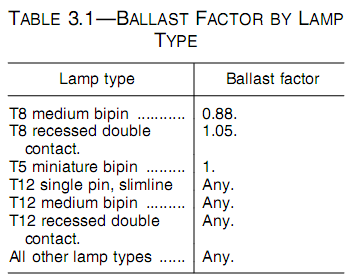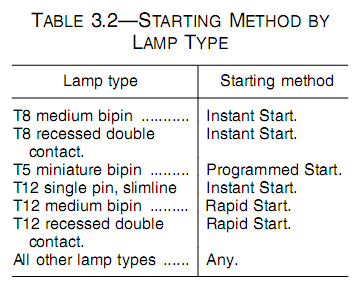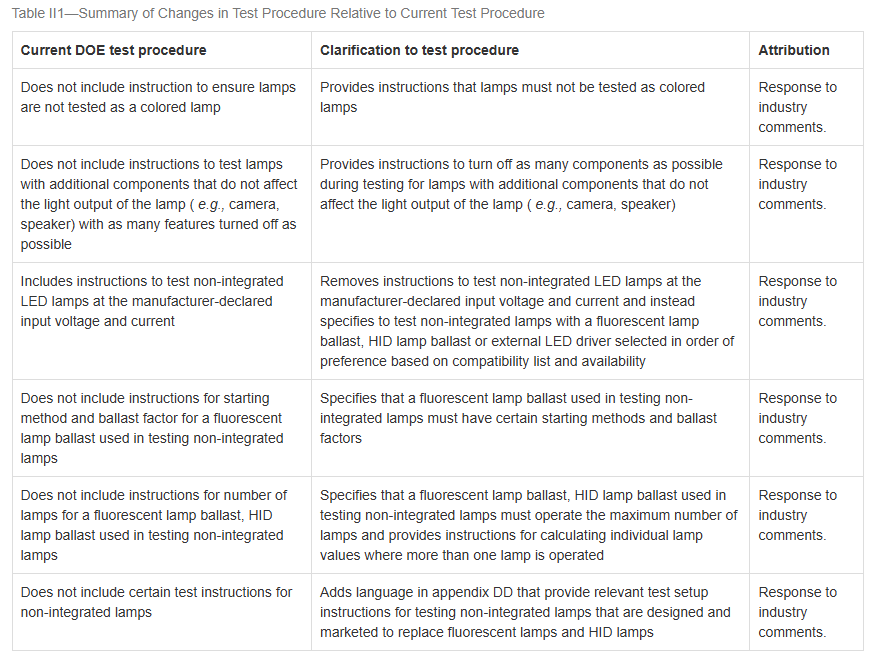On January 16, 2025, the U.S. Department of Energy released the final version of the regulations on the test procedures for general lighting bulbs (GSLs). The Energy Policy and Conservation Act (EPCA) directs the Department of Energy (DOE) to initiate the GSL rulemaking cycle to decide whether to modify the currently effective GSL standards and test methods.
DOE evaluates the test procedures for different products at least once every 7 years to determine whether the revised test procedures are more accurate in meeting actual requirements, whether they are technically feasible, and whether they are economically reasonable. In this final Federal Register specification, for the test procedures for general lighting bulbs (GSLs), DOE made final explanations on the appendix W, appendix BB, and appendix DD test methods in Subpart B of Part 430.
• The effective date of this rule is February 18, 2025.
• The revised test procedures will be mandatory from July 15, 2025.
DOE's revisions to the test procedures for general lighting bulbs (GSLs) are as follows:
DOE has modified the test methods in Subpart B of Part 430, and the test standards are as follows:
appendix W--Uniform Test Method for Measuring the Energy Consumption of Compact Fluorescent Lamps
Appendix W--Uniform Test Method for Measuring the Energy Consumption of Compact Fluorescent Lamps;
appendix BB--Uniform Test Method for Measuring the Input Power, Lumen Output, Lamp Efficacy, Correlated Color Temperature (CCT), Color Rendering Index (CRI),Power Factor, Time to Failure, and Standby Mode Power of Integrated Light-Emitting Diode (LED) Lamps
Appendix BB--Uniform Test Method for Measuring the Input Power, Lumen Output, Lamp Efficacy, Correlated Color Temperature (CCT), Color Rendering Index (CRI),Power Factor, Time to Failure, and Standby Mode Power of Integrated Light-Emitting Diode (LED) Lamps;
appendix DD-- Uniform Test Method for Measuring the Energy Consumption and Energy Efficiency of General Service Lamps That Are Not General Service Incandescent Lamps, Compact Fluorescent Lamps, or Integrated LED Lamps
Appendix DD--Uniform test methods for energy consumption and energy efficiency of general lighting lamps other than general incandescent lamps, compact fluorescent lamps and integrated LED lamps;
Specific revisions to appendix W, appendix BB, and appendix DD are as follows:
1. Test at maximum power and not in the state of colored lamp. If multiple modes appear at the same maximum power (such as adjustable color temperature CCT or adjustable display index CRI), one of the modes can be selected for testing. The test report needs to state which color temperature or CRI gear is selected for testing;
2. Lamps with additional functions (e.g., cameras, speakers, purifiers) that do not affect light output (e.g., will not turn on/off the lamp, change brightness, change light color, etc.) need to be tested with the additional functions turned off as much as possible, provided that the product cannot be permanently altered. Permanently altering the product includes cutting wires, using electric irons, or destroying the structure of the lamp, and does not include the use of connectable nuts, fasteners, or screws. If these functions cannot be turned off without permanently altering the product, the energy consumption of these additional functions must be included in the test, and the test report needs to state which functions are turned off and which functions are still turned on.
In addition, the specific revisions to appendix DD are as follows:
1. For non-integrated LED lamps, delete the instructions for testing at the input voltage and current declared by the manufacturer;
2. Specify that non-integrated lamps need to be tested using fluorescent lamp ballasts, HID lamp ballasts or external LED drivers, with the priority being the list of compatible ballasts and drivers on the market provided by the manufacturer;
3. Specify the starting method and ballast factor of the ballast used in the test. For non-integrated lamps, please test in the following order of priority: If all ballasts in the manufacturer's public compatibility list use the same starting method, select the ballast with that starting method for testing; If the ballasts in the manufacturer's public compatibility list use multiple ballast factors, select the ballast factor according to the different types of lamps in Table 3.1 (If the ballast factor in the table is not included in the compatibility list, the manufacturer should select the ballast with the ballast factor closest to that in Table 3.1); If the ballasts in the manufacturer's public compatibility list use multiple starting methods, select the ballast with the corresponding starting method according to the lamp type in Table 3.2 (If the ballast in the compatibility list does not include the starting method in Table 3.2, the manufacturer can select another starting method); If the above conditions cannot be met and the lamp only works under a low-frequency, preheat-start ballast, test at the voltage and current declared by the manufacturer.
4. The maximum number of lamps that can be operated by the fluorescent lamp ballast, HID lamp ballast or external driver used in the specified test. When testing the luminous flux, place one of the lamps in the integrating sphere for testing, and the other lamps work outside the integrating sphere. Test the luminous flux of a single lamp, and then divide the power and current by the number of lamps to obtain the test value of a single lamp.
Requirements for ballast factors for different types of lamps:

Start-up methods for ballasts of different types of lamps:

Comparison between the updated test method and the existing test method:


